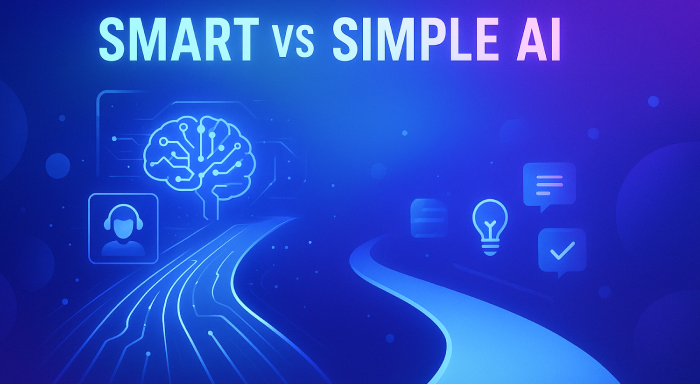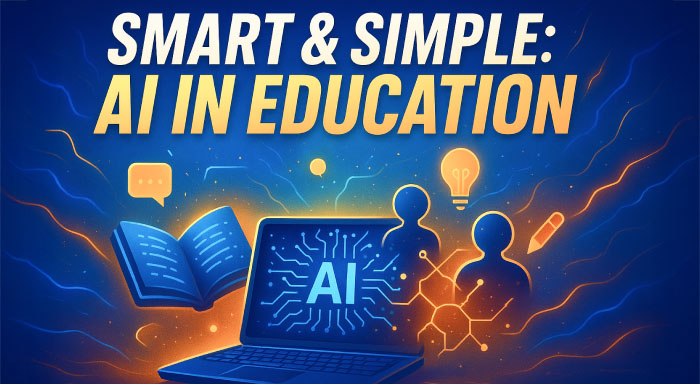Artificial intelligence is transforming the way students learn, the way instructors teach, and the way parents provide learning support. From customized tutoring to immediate writing assistance, AI in education is
Artificial intelligence is transforming the way students learn, the way instructors teach, and the way parents provide learning support. From customized tutoring to immediate writing assistance, AI in education is now visible in classrooms, homework apps, and learning platforms.
Beneath the hype, one sees the movement toward widely accessible, student-focused tools that support actual academic labor. An example of such a step in this direction is the AI writing platform studypro.com The utility of AI, no matter the complexity, depends on how thoughtfully it is used.
Two Paths: Smart or Simple AI

Education AI falls into two categories. One is a high-end model constructed to analyze data, adapt lessons, or mimic human tutors. They are smart instruments, robust but limited by cost, access, or learning curve.
The second route consists of the little, simple tools. These consist of paraphrasers, summarizers, brainstorming tools, and plain feedback mechanisms. They are not flashy on the outside, but when employed in a calculated manner, they bring considerable improvement to daily learning.
Smart Tools: High-Impact, High-Complexity
Higher-level AI tools center on the personalization of learning. They utilize algorithms to monitor progress, modify content difficulty, or provide focused remediation. Some examples include adaptive mathematics programs or AI-based tutoring apps, which seek to engage students at their level and move them in a positive direction.
These technologies, however, need to be implemented carefully. Teachers need to be trained, schools need infrastructure, and students need to be used regularly in order to gain benefits. Under the right atmosphere, though, AI in education helps discover gaps, predict outcomes, and drive long-term academic success.
Challenges With Smart Tools
Smart AI tools, while promising, are not necessarily practical at all. Some are based on big data sets, expensive subscriptions, or long onboarding processes. That makes them harder to scale or implement in under resourced schools.
There's also the threat of over-automation. If there's too much for AI to do, students lose control of the learning process. Balance is necessary. The best smart tools enhance human teaching, not replace it.
Easy Tools That Have an Impact
Basic AI tools are underrated. Students employ these applications on a daily basis to organize their ideas, write more efficiently, and condense lengthy texts. They require less training and are typically free or inexpensive.
Due to their simplicity, these tools integrate effortlessly into personal study habits. They operate in brief bursts, when doing homework, or while editing drafts. Their effect accumulates over time.
Summarizers and Reworders
The most commonly used fundamental tool might be the text summarizer. Students apply the summarization features to summarize heavy readings, or to clarify complicated passages in their readings. This is helpful in terms of time-saving and removing stress, especially when students are studying for tests or are working on new content.
Paraphrasing tools also assist with writing, as they produce a clear version of difficult sentences. They help prompt the students to revise and better present their ideas. When used appropriately, paraphrasing tools allow students to discover new phrasing strategies, while not taking away their voice.
Brainstorming and Idea Generation
When students are stuck at the start of an assignment, AI brainstorming tools give them a push. Enter a topic or question, and the tool produces angles, subtopics, or thesis ideas.
It does not replace critical thinking. Rather, it eliminates the resistance to starting. Students still have to assess and work out ideas, but they start with more guidance and less anxiety.
Drafting With AI Support
Simple writing aids can develop outlines into complete paragraphs or edit rough drafts for clarity. This permits students to concentrate on developing their argument instead of spending too much time on grammar at the beginning.
These tools will operate optimally if students are facilitating the process, providing specific hints, heavily editing, and reading each result. Used in this method, the AI is included in the revision loop, rather than being the exclusive author of the paper.
Teachers Using AI in Simple Ways
Educators also benefit from basic AI tools. They use summarizers to condense articles, grammar checkers to quickly review student work, and outline generators to scaffold assignments.
These applications save time and reduce burnout without altering teaching goals. Teachers still lead instruction. AI just cuts down on repetitive tasks and frees them up for more direct student engagement.
Making AI Work in the Classroom
AI works best when teachers set clear boundaries. Teachers implement policies regarding what tools are acceptable, when they can be used, and how they can be used in conjunction with student feedback.
For example, a teacher might allow for AI brainstorming but require students to submit their own outline before writing. Or they might use AI grammar programs for first feedback but refrain from grading until hand-checked writing. This type of format puts responsibility in.
What Parents Need to Know
Parents fear that AI will turn students into slackers. But used responsibly, these technologies encourage students to engage. They assist students in taking responsibility and making decisions independently on how they want to do their work.
Parents can help by inquiring about how children use AI, not if. Emphasize learning objectives, not shortcuts. A good question to ask is, “What part of the work did the tool help with, and what did you do yourself?”
Matching Tools to Tasks
Choosing the right tool depends on the academic goal. The key is to match the AI’s function with the type of thinking or output required. Below is a quick guide:
| Task | Smart AI Tool | Simple AI Tool |
| Personalizing learning paths | ✅ | |
| Expanding an essay draft | ✅ | |
| Reviewing grammar | ✅ | |
| Diagnosing student performance | ✅ | |
| Brainstorming ideas | ✅ | |
| Giving early writing feedback | ✅ | ✅ |
| Revising complex sentences | ✅ | |
| Analyzing data across assessments | ✅ |
Lighter, more frequent use is frequently supported by simple tools. Though they require preparation, smart tools provide more profound insights. Depending on the academic setting, both can be beneficial.
When Simpler Tools Work Better
More often than not, an entry-level tool satisfies the requirement more effectively. Students composing brief assignments, reading a chapter, or taking notes on a test do not need sophisticated AI.
Simplicity confers control. Students can experiment, resubmit, and iterate rapidly. There's less resistance and less distraction. For day-to-day labor, small instruments bring big benefits. These instruments are also simpler to learn, which promotes regular use and instills confidence in learning practices without overwhelming students with complicated features they might not require.
Risks of Relying Too Much
Overreliance on any AI, simple or smart, can dull independent thought. If students use tools automatically, they may avoid grappling with hard concepts or slow down skill development.
The solution is moderation and reflection. Students need to ask if they're employing AI to augment their own thoughts or substitute for thinking. That difference is everything. Establishing this awareness early avoids dependency and promotes reflective decision-making that is carried over to other scholarly and real-life contexts.
Developing AI Consciousness among Students
Students are empowered through learning how to think when applying AI. They need to know what each application is for, when to query its result, and how to remain in command of their work.
This might be as minimal as role modeling in class or asking brief reflection on how a tool assisted. These approaches make students into responsible users, learning with AI, not about it.
Conclusion
AI will continue to influence education, but influence is use-dependent. Intelligent tools provide analysis and customization. Basic tools provide speed and flexibility. Both have a place in contemporary learning environments.
The strongest application of AI is usually not the most complicated. It's the most straightforward, deliberate one. When teachers and students know what they require and select the appropriate tool for the task, AI in Education becomes a helping hand, not a cheat.
Related Posts
Top Strategies for Improving Your English Skills From Home
Respond to this article with emojis






